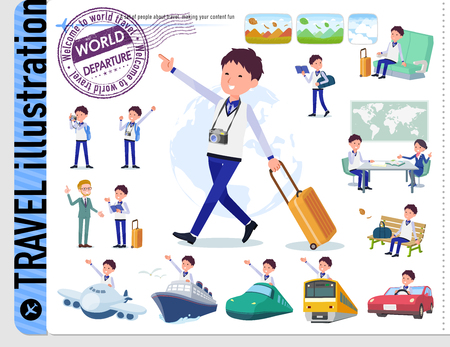Understanding Career Change Challenges in the U.S. Job Market
Switching careers in the United States comes with a distinct set of hurdles and possibilities. Unlike linear career paths, career changers often face skepticism from hiring managers who may question transferable skills or perceived lack of industry experience. In the American job market, where resumes are typically screened quickly—often by automated systems—career changers must strategically present their background to align with new industry expectations. At the same time, the U.S. hiring landscape values adaptability and diverse experiences, offering unique opportunities for individuals able to clearly demonstrate how their previous roles equip them for a new field. Understanding these dynamics is essential for crafting an effective resume that not only addresses potential employer concerns but also highlights strengths that set you apart as a well-rounded, adaptable candidate.
Popular Resume Formats for Career Changers
When transitioning to a new career, choosing the right resume format is crucial to present your skills and experience in the best possible light. The U.S. job market typically recognizes three main types of resume formats: functional, combination, and chronological. Each format serves distinct purposes and has its own set of advantages and drawbacks for career changers. Below is a detailed breakdown of each option to help you make an informed decision.
Functional Resume
The functional resume emphasizes skills and areas of expertise rather than work history. This approach is particularly useful for career changers who want to highlight transferable abilities gained from previous roles that may not directly relate to the new field.
| Advantages | Disadvantages |
|---|---|
| Draws attention to relevant skills De-emphasizes unrelated work history Useful for those with employment gaps |
May raise concerns about lack of direct experience Less favored by traditional recruiters Can seem vague without specific examples |
Combination (Hybrid) Resume
The combination resume blends elements of both functional and chronological formats. It allows candidates to showcase their most relevant skills at the top, followed by a concise work history section. This format is popular among career changers because it balances skill emphasis with a clear professional trajectory.
| Advantages | Disadvantages |
|---|---|
| Highlights transferable skills Presents a logical work timeline Addresses potential employer concerns about experience gaps |
Can become lengthy if not well-edited Might still expose unrelated job history Takes more effort to tailor effectively |
Chronological Resume
The chronological resume lists your work experience in reverse order, starting with the most recent position. While this format is the most commonly used in the U.S., it may not always serve career changers well unless their past jobs align closely with their new goals.
| Advantages | Disadvantages |
|---|---|
| Easily recognized by U.S. employers Presents a clear career progression Straightforward structure for applicant tracking systems (ATS) |
Emphasizes unrelated work history Highlights employment gaps Difficult to showcase transferable skills prominently |
Choosing the Right Format for Your Transition
Selecting the appropriate resume format depends on your unique background and how closely your previous experiences align with your target industry. For many career changers, the combination resume offers an effective balance, allowing them to market both their skillsets and professional journey. However, understanding the strengths and limitations of each type will empower you to tailor your application for maximum impact in the competitive U.S. hiring landscape.

3. Translating Transferable Skills and Experience
Successfully changing careers in the U.S. job market hinges on your ability to identify and showcase transferable skills—those core competencies and experiences that apply across industries and roles. U.S. employers value candidates who can connect their previous achievements to new challenges, so it’s essential to strategically frame your background in a way that resonates with hiring managers.
Identifying Your Transferable Skills
Start by listing all of your technical and soft skills from previous roles, training, or education. Focus on abilities like project management, team leadership, problem-solving, communication, adaptability, or any industry-specific knowledge that can be relevant in your target field. Analyze job postings for your desired positions to pinpoint which of your existing skills align with common requirements.
Framing Your Experience for the U.S. Audience
It’s important to communicate your experience using terminology familiar to American employers. Avoid jargon specific to your old industry; instead, use universal terms recognized across sectors—for example, “customer service” instead of “client relations,” or “budget management” instead of “cost control.” Highlight results and outcomes using numbers or measurable achievements whenever possible, as U.S. hiring managers appreciate data-driven evidence of success.
Effective Presentation Strategies
- Summary Section: Open your resume with a concise summary that emphasizes your adaptability and key transferable skills relevant to the new role.
- Skills Section: Create a dedicated section listing transferable skills that match the job description.
- Experience Bullets: Under each past position, include bullet points that describe how you used these skills to deliver results, making sure to tailor language and examples for the U.S. context.
The Bottom Line
By clearly identifying and effectively presenting your transferable skills, you demonstrate to U.S. employers not just what you’ve done, but how you’ll add value in a new capacity. This approach is key to overcoming career change hurdles and securing interviews in the competitive American job market.
4. Tailoring Your Resume for U.S. Recruiters
When changing careers in the United States, customizing your resume to fit local expectations and industry-specific requirements is essential. U.S. recruiters are accustomed to seeing certain resume formats, keywords, and structural elements that may differ from those in other countries. Additionally, most companies use Applicant Tracking Systems (ATS) to screen resumes before a human even sees them. Below are practical strategies to ensure your resume stands out in the U.S. hiring market.
Understanding Local Expectations
American recruiters typically expect concise, results-oriented resumes without personal details such as age, marital status, or photos. The focus should be on measurable achievements and transferable skills relevant to the new field.
Key Elements Preferred by U.S. Recruiters
| Element | Description |
|---|---|
| Contact Information | Name, phone number, professional email, LinkedIn profile; no photos or personal data |
| Summary Statement | Brief statement highlighting transferable skills and career goals tailored to the target role |
| Skills Section | List of hard and soft skills relevant to the new industry; align with job descriptions |
| Professional Experience | Focus on achievements, quantifiable results, and responsibilities that demonstrate adaptability |
Aligning with Industry Norms
Each industry in the U.S. has its own standards regarding resume style and content. For example, tech fields often value technical skills and project accomplishments, while education or non-profit roles emphasize communication and community impact.
Industry-Specific Tips Table
| Industry | Resume Focus |
|---|---|
| Technology | Technical proficiency, project outcomes, certifications |
| Healthcare | Licenses, clinical experience, patient care impact |
| Marketing/Sales | Campaign results, sales figures, creativity metrics |
Navigating Applicant Tracking Systems (ATS)
The majority of U.S. employers use ATS software to filter resumes based on keywords found in job postings. To pass this initial screening:
- Mirror the language used in the job description for both skills and experience sections.
- Avoid complex formatting like tables within text sections—stick to standard fonts and bullet points.
- Use common section headings such as “Professional Experience,” “Education,” and “Skills.”
- Save your file as a .docx or .pdf as specified by the employer.
Tailoring your resume according to these local practices can significantly improve your chances of landing interviews during your career transition in the U.S.
5. Highlighting Education, Certifications, and Professional Development
For career changers in the U.S., showcasing your commitment to learning is crucial for building credibility with potential employers. When your direct experience may not fully align with a new industry, emphasizing your education, certifications, and ongoing professional development can help bridge the gap and demonstrate your readiness for the transition.
Showcase Relevant Credentials First
Place your most relevant degrees, certifications, or licenses near the top of your resume, just after your summary statement. For example, if you are moving into project management and have earned a PMP certification or completed coursework in Agile methodologies, make sure these credentials are clearly visible. This instantly signals to hiring managers that you meet baseline qualifications for the role.
Include Continuing Education and Workshops
The U.S. job market values professionals who keep their skills up-to-date. List any recent workshops, online courses (such as those from Coursera or LinkedIn Learning), or bootcamps that relate to your new field. Provide course titles and key topics covered—this shows initiative and helps position you as a proactive learner.
Highlight Transferable Knowledge
If your formal education is not directly related to your target industry, identify aspects of your studies that apply. For instance, analytical skills developed in engineering or communication strengths honed through teaching are highly valued in many sectors. Use bullet points to explain how this knowledge supports your career change.
Pro Tip: Add Industry Keywords
Tailor this section using keywords from job postings in your desired field—terms like “data analytics,” “compliance,” or “digital marketing.” This increases your chances of passing Applicant Tracking Systems (ATS) and makes it easier for recruiters to see the relevance of your background.
By thoughtfully organizing and detailing your educational achievements and professional development efforts, you can present yourself as an adaptable, forward-thinking candidate ready for a successful transition in the American job market.
6. Real-Life Examples: Successful Career Change Resumes
Seeing how others have successfully navigated a career change in the U.S. job market can be both inspiring and instructive. Below, we present sample resume snippets and brief success stories that highlight effective formatting and storytelling strategies tailored for career changers.
Sample Resume Snippet #1: Teacher to Project Manager
Professional Summary
Resourceful educator with 7+ years of classroom experience, skilled in curriculum planning, stakeholder communication, and team leadership. Seeking to leverage transferable skills as a Project Manager in the tech sector.
Relevant Skills Section
- Project Coordination
- Team Leadership
- Conflict Resolution
- Agile Methodology Fundamentals (Completed Coursera Certificate)
Success Story:
Maria transitioned from teaching to project management by emphasizing her organizational and communication skills, supported by project-based achievements such as leading school-wide events. By restructuring her resume with a hybrid format and highlighting relevant certifications, she landed an entry-level PM role at a mid-sized software company.
Sample Resume Snippet #2: Retail Supervisor to Human Resources Assistant
Professional Summary
Dynamic retail supervisor with expertise in team development, conflict management, and customer engagement. Eager to contribute HR skills in an office environment through strong people-oriented focus and process improvement experience.
Selected Achievements
- Trained and mentored 15+ new hires per quarter, reducing onboarding time by 25%.
- Implemented feedback system that improved employee satisfaction scores by 18%.
Success Story:
Derek’s functional resume format showcased his transferable leadership and training skills rather than his job titles. He used quantifiable outcomes to demonstrate impact, which resonated with hiring managers looking for results-driven HR professionals. Derek secured a position as an HR Assistant within three months.
Sample Resume Snippet #3: Military Veteran to IT Support Specialist
Skills Summary
- Troubleshooting & Diagnostics
- User Training & Technical Support
- Sensitive Data Handling (Secret Clearance)
Relevant Experience
Communications Officer, U.S. Army
- Spearheaded the installation of secure communications networks in high-pressure environments.
Success Story:
Luis reframed his military communications background using civilian terminology and highlighted technical proficiencies relevant to IT support roles. His combination resume format allowed him to lead with critical skills, resulting in multiple interviews and a job offer from a managed IT services provider.
Key Takeaways for Career Changers
- Select a resume format that emphasizes your strengths—hybrid or functional formats work well for most career changers.
- Use clear section headings like “Summary of Qualifications” or “Relevant Skills.”
- Narrate your achievements using measurable results wherever possible.
The real-life examples above illustrate how strategic formatting and targeted storytelling can help career changers stand out in the competitive U.S. hiring landscape. Adapt these principles to your own journey for a more confident transition.


